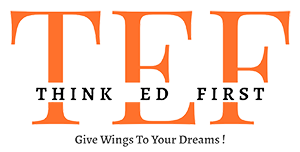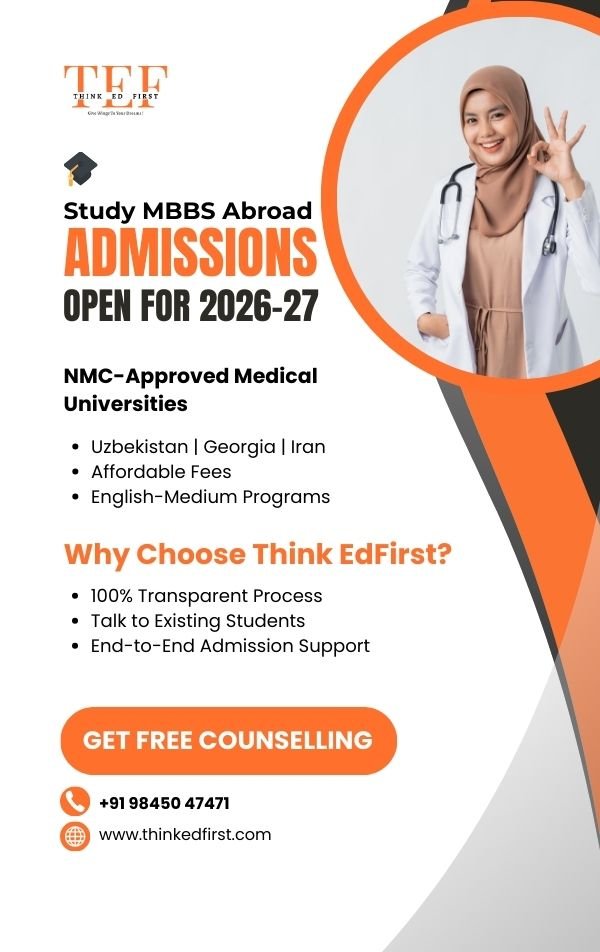Have you ever wondered how a medical degree from Russia can open doors to a thriving career in the United States? For many Indian students, studying MBBS in Russia is an affordable and accessible option. However, transitioning to postgraduate studies in the United States requires careful planning and preparation.
Russian medical programs are globally recognized, but graduates often face challenges like language barriers and low FMGE pass rates. Despite these hurdles, the journey to specialization in the United States is achievable. It involves clearing licensing exams, gaining practical training, and meeting specific requirements.
We invite you to explore this pathway with us. Together, we’ll break down each step, from understanding the process to achieving your dream career. Ready to learn how to turn your Russian medical degree into a successful future in the United States?
Overview of MBBS in Russia and Global Recognition
Russia’s medical education system is renowned for its affordability and global recognition. The country offers a variety of medical programs, including all-Russian, bilingual, and all-English options. These programs are designed to meet international standards, making them a popular choice for students worldwide.
Russian medical universities are recognized by prestigious institutions like WDOMS, ECFMG, and NMC. This accreditation ensures that graduates are eligible to take medical licensing examinations in various countries. The structured curriculum and rigorous exam standards contribute to the high quality of education.
Highlights of Russian Medical Education
The MBBS program in Russia typically spans 6 years, including a year of clinical training. The curriculum is divided into Basic Sciences and Clinical Sciences, ensuring a comprehensive learning experience. Students benefit from a low student-teacher ratio, which fosters personalized attention and academic support.
Here’s a quick overview of the program structure:
| Phase | Duration | Focus |
|---|---|---|
| Basic Sciences | 3 Years | Foundational medical knowledge |
| Clinical Sciences | 3 Years | Practical training and patient care |
Our Experience with International Accreditation
Understanding the accreditation process is crucial for students planning to practice medicine globally. Russian medical degrees are recognized by organizations like WHO and NMC, ensuring their acceptance in countries like India, the United States, and Canada. Graduates must pass exams like USMLE or MCC to practice in North America.
Here are some key facts about international recognition:
- Russian medical universities are listed in the World Directory of Medical Schools (WDOMS).
- Graduates are eligible to take licensing exams in multiple countries.
- The program’s academic integrity and exam standards are highly regarded.
With its globally recognized education system, Russia provides a solid foundation for aspiring medical professionals. The affordability and quality of these programs make them an excellent choice for students aiming for a successful medical career.
Exploring MD in USA after MBBS Russia Pathway
Transitioning from a Russian medical degree to postgraduate studies in the United States is a journey filled with opportunities and challenges. For medical graduates, this pathway involves clearing critical exams, meeting eligibility criteria, and adapting to a new education system. Understanding these steps is essential for a smooth transition.
Mapping the Transition from Russia to the USA
The first step for medical graduates is to complete the USMLE exams. These tests assess the knowledge and skills necessary for practicing medicine in the United States. Clearing these exams is a significant milestone in the journey toward residency programs.
Another critical aspect is the application timeline. Graduates must plan their applications carefully, ensuring all required documents are submitted on time. This includes transcripts, letters of recommendation, and proof of English proficiency.
For those who have completed their MBBS in Russia, understanding the differences in clinical training is crucial. The United States emphasizes hands-on experience, which may require additional preparation.
Key Differences in Medical Education Systems
One of the main challenges is the difference in curriculum structure. Russian programs focus heavily on theoretical knowledge, while U.S. programs prioritize practical training. This shift can be daunting but is manageable with proper guidance.
Clinical rotations in the United States are more extensive and require active participation. Graduates must adapt to this hands-on approach to succeed in their residency programs.
Despite these challenges, the opportunities for medical graduates are immense. Successfully navigating this pathway can lead to a rewarding career in the United States, with access to advanced medical practices and research opportunities.
Understanding US Licensing Examinations and Residency Prospects
For international medical graduates, the USMLE is the gateway to practicing medicine in the U.S. This licensing examination is a critical step in achieving residency and building a successful career. Understanding its structure and requirements is essential for a smooth transition.

USMLE and Its Role in Achieving US Residency
The USMLE consists of three steps that assess a candidate’s medical knowledge and clinical skills. Step 1, now pass/fail, evaluates foundational concepts. Step 2 focuses on clinical knowledge and patient care, while Step 3 tests independent practice readiness.
Passing these exams is indispensable for international graduates. It opens doors to residency programs and ensures eligibility for medical licensure. Proper preparation and understanding of the exam format are key to success.
The Importance of Clinical Rotations in ACGME Accredited Hospitals
Clinical rotations in ACGME-accredited hospitals are a mandatory part of the training process. These rotations provide hands-on experience, allowing graduates to apply their knowledge in real-world settings. They also enhance patient care skills and build confidence.
Substitute programs like observerships often lack the depth required for residency applications. Authentic clinical rotations are the best option for gaining the necessary experience. Choosing the right training program is crucial for career progression.
The cost and structure of these courses can vary significantly. It’s important to research and select programs that align with your career goals. Proper training approaches, such as those offered in accredited hospitals, have proven effective in preparing graduates for residency.
Navigating the path to a medical career in the U.S. requires careful planning. From mastering the USMLE to completing clinical rotations, each step is vital. For those exploring affordable MBBS programs abroad, understanding these requirements is the first step toward success.
Examining Challenges and Future Opportunities Post-MBBS in Russia
Pursuing a medical career after studying abroad involves overcoming unique challenges and seizing global opportunities. Graduates often face hurdles like language barriers, licensing exams, and competition for postgraduate seats. However, with the right strategy, these challenges can be turned into stepping stones for success.
Language Barriers and Licensing Examination Hurdles
One of the most significant challenges is mastering the language. For many graduates, adapting to a new language is essential for effective communication in the medical field. Additionally, licensing exams like the FMGE or USMLE require extensive preparation and understanding of the local medical system.
These exams often come with steep fees, adding financial pressure. Graduates must also navigate the differences in curriculum and clinical training standards. Proper guidance and resources can help overcome these obstacles and pave the way for a successful career.
Comparing Career Prospects: India vs. USA
The medical field in India and other countries assesses foreign medical qualifications differently. In India, graduates must clear the FMGE to practice, while countries like the United States require the USMLE. Each pathway has its own set of challenges and opportunities.
Research opportunities and university support play a crucial role in shaping a graduate’s future. Specialization tracks and hands-on training are vital for career growth. Graduates must weigh their options carefully, considering factors like job prospects, work environment, and professional growth.
For those exploring alternatives, programs like MBBS without NEET offer a pathway to international medical education. Understanding the requirements and preparing strategically can help graduates achieve their career goals, whether in India or abroad.
Planning Our Medical Career: Strategy, Internships, and Postgraduate Options
Crafting a successful medical career requires strategic planning and hands-on experience. For Indian students, this means understanding the process of securing a residency program and building a competitive profile. Internships and clinical training play a crucial role in shaping our journey toward postgraduate studies.
Building a Competitive Profile with Internships and Clinical Experience
Structured internships are the cornerstone of a strong medical career. They provide practical exposure and help us develop essential clinical skills. These experiences transform us into strong candidates for postgraduate programs, especially in competitive fields.
Engaging in meaningful training opportunities during our studies is equally important. Clinical rotations and hands-on practice prepare us for the challenges of residency programs. They also enhance our ability to adapt to diverse healthcare systems.
Exploring Global Opportunities and Advanced Research
Global opportunities in medicine are vast and rewarding. Advanced research programs and specialized training abroad can elevate our medical career. These experiences not only broaden our knowledge but also open doors to international collaborations.
For Indian students, understanding the application process for global programs is key. Preparing for exams like the USMLE and securing letters of recommendation are essential steps. Leveraging these opportunities can lead to a fulfilling and impactful career in medicine.
Conclusion
Embarking on a medical career abroad demands careful planning and a clear understanding of the licensing process. For graduates, the journey involves mastering critical exams and adapting to new healthcare systems. Each step, from securing global recognition to completing clinical training, is essential for success.
We encourage aspiring doctors to weigh the challenges and rewards in the field of medicine. By leveraging robust medical education and maintaining diligence in the licensing process, graduates can achieve their career goals. The insights provided here serve as a roadmap for effective planning.
Ultimately, the pathway to becoming a doctor abroad is both challenging and rewarding. With the right strategy and dedication, graduates can turn their aspirations into reality. Use this guidance to navigate each step with confidence and purpose.




